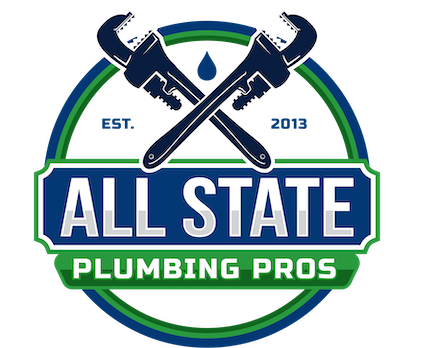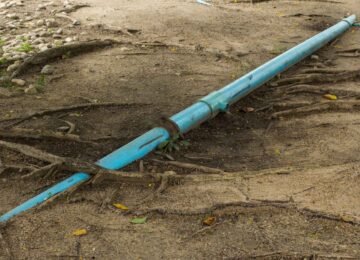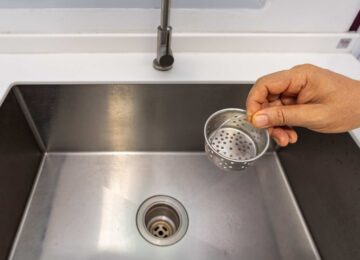A clogged sink can throw off your entire routine, especially when you’re preparing meals, washing dishes, or brushing your teeth. Whether it’s a slow-draining kitchen sink filled with murky water or a bathroom sink that simply won’t drain at all, these backups are both inconvenient and unsanitary. Fortunately, knowing what to do if sink is clogged can help you fix the issue without calling in a professional plumber right away.
Most minor clogs are caused by grease, food scraps, soap scum, or hair accumulating in the drain pipe or P-trap. If addressed early, they can often be resolved using simple tools and items you already have at home. In this guide, we’ll walk through the most effective DIY strategies to unclog your sink and prevent future clogs, along with signs it’s time to call for professional help.
Introduction to Clogged Sinks
Clogged sinks are one of the most common household plumbing issues. Over time, debris like grease, coffee grounds, food particles, hair, and soap residue collect in the drain, creating stubborn blockages. If ignored, the clog can worsen and begin affecting other drains in your home.
Understanding what causes clogs and learning how to deal with them can save you time, frustration, and money. Before reaching for chemical cleaners or dialing a plumber, it’s worth trying a few proven at-home solutions that are both effective and safer for your plumbing system.
Proper maintenance and mindful usage habits, like using a drain strainer and disposing of grease properly, can also help you prevent clogs from forming in the first place.
Natural Remedies for Sink Clogs
When your sink starts draining slowly or backs up completely, natural methods are often the safest and easiest first option. These solutions work best for minor to moderate clogs caused by organic material like food or soap.
Baking soda and white vinegar create a chemical reaction that helps loosen grime and debris in the drain pipe. Meanwhile, boiling water helps melt grease and soap scum that line the inner walls of pipes.
Here are a few gentle yet effective natural solutions:
- Baking soda + vinegar: Pour one cup of baking soda down the drain, followed by one cup of vinegar. Cover the drain for 10–15 minutes, then carefully pour boiling water to flush the mixture through the pipe.
- Salt + boiling water: Pour a half cup of salt into the drain, wait a few minutes, then pour boiling water. Let it sit for 10–20 minutes before rinsing with hot tap water.
- Dish soap + hot water: Add a few tablespoons of dish soap to a pot of hot (not boiling) water and slowly pour it down the sink. This helps break down grease-based clogs.
These methods are safe for most sinks, including kitchen and bathroom sinks, and help prevent damage that chemical cleaners might cause.
How to Unclog a Kitchen Sink
Kitchen sinks are especially vulnerable to clogs due to food waste, grease, and dish soap residue. The issue can be worse in a double sink or one with a garbage disposal, where the clog might sit deeper in the system.
To address a kitchen sink clog:
- Remove standing water: Use a measuring cup or small container to bail out any excess water.
- Try boiling water: If the clog is grease-related, boiling water might melt and flush it away.
- Use a plunger: A standard toilet plunger can create suction and dislodge food particles. Make sure there is enough water to cover the plunger cup and block any adjacent drain openings.
- Check the garbage disposal: If your sink has one, make sure it isn’t jammed. Turn off the power and manually rotate the blades using a hex key or disposable wrench.
- Try natural methods or a drain snake: As outlined earlier, these can reach deeper blockages that hot water and plunging can’t dislodge.
To prevent kitchen sink clogs in the future, avoid putting grease, coffee grounds, pasta, or fibrous vegetables like celery down the drain.
Using a Drain Snake
A drain snake (or auger) is one of the most reliable tools for breaking up tough clogs deep in your sink drain or P-trap. It’s particularly helpful when baking soda or plunging hasn’t resolved the issue.
To use a drain snake effectively:
- Insert the snake into the sink drain slowly, guiding it until you feel resistance.
- Rotate the handle to break up or hook the clog.
- Pull the snake out slowly; it may bring up hair, food debris, or buildup.
- Flush the drain with hot water to ensure the blockage is cleared.
A wire coat hanger can work as a makeshift snake for shallow clogs in bathroom sinks, but a dedicated auger is better for kitchen sinks and stubborn clogs.
Chemical Solutions (Use with Caution)
Chemical drain cleaners are often marketed as a quick fix for slow drains and clogged sinks, but they come with risks. These solutions can damage older or PVC pipes, harm septic systems, and pose health hazards if not handled correctly.
If you choose to use a chemical cleaner:
- Read and follow the instructions on the label.
- Wear gloves and protective eyewear.
- Never mix with other cleaners or substances.
Chemical cleaners should be a last resort after natural and mechanical methods have failed. If the sink remains clogged after treatment, it’s time to consider other solutions or seek professional help.
How to Maintain Your Garbage Disposal
A malfunctioning or dirty garbage disposal is a common source of kitchen sink clogs. When food waste accumulates in the disposal or blades become dull, the unit may not grind effectively, causing backups.
Maintenance tips for your garbage disposal:
- Run cold water: Always run cold water while using the disposal to help move particles through the pipes.
- Avoid certain items: Don’t put bones, coffee grounds, eggshells, fibrous vegetables, or pasta into the unit.
- Clean regularly: Use a mixture of baking soda and vinegar or grind citrus peels to reduce buildup and odors.
- Sharpen blades: Ice cubes can help clean and sharpen disposal blades naturally.
Routine cleaning not only extends the lifespan of your disposal but also helps prevent future clogs.
Boiling Water Method for Sink Clogs
Boiling water is one of the simplest ways to address minor clogs caused by grease and soap residue. It’s a particularly useful method for metal pipes, but should be used cautiously with PVC plumbing.
To use this method:
- Bring a large pot of water to a boil.
- Carefully pour boiling water down the clogged drain in stages.
- Allow it to sit for several minutes before running hot tap water.
This method is most effective for soft blockages and can be combined with salt, dish soap, or baking soda for added impact.
Checking and Cleaning the P-Trap
The P-trap is the curved, U-shaped pipe under the sink that holds water to prevent sewer gases from entering your home. Unfortunately, it also tends to collect debris and grease, becoming a common clog point.
To clean the P-trap:
- Turn off the water supply and place a bucket underneath.
- Use pliers or your hands to loosen the slip nuts on both ends of the trap.
- Remove the trap and clean out debris using an old toothbrush or wire.
- Rinse with water and reattach securely.
This step can often fix a persistent clog, especially if the drain snake or natural methods haven’t worked.
Using a Wet/Dry Vacuum
Wet/dry vacuums are surprisingly effective for clearing blockages caused by hair, soap, or food particles. This method works best for bathroom sinks or shallow kitchen clogs.
To try this method:
- Set the vacuum to liquid pickup and cover the vent.
- Seal the hose over the drain using a wet cloth or duct tape.
- Turn on the vacuum for 30 seconds to a minute.
The suction can often dislodge and pull out stubborn clogs quickly and cleanly. Use caution to ensure you’re not pushing the clog deeper.
When to Call a Professional Plumber
If your sink remains clogged after multiple DIY attempts, it may be time to call a licensed plumber. Persistent backups, gurgling noises, and slow drainage throughout the home may indicate a more serious blockage in your main drain line or vent system.
A professional plumber can:
- Use camera inspections to find the exact location of the clog
- Clear large or complex blockages with commercial-grade equipment
- Diagnose underlying issues such as broken pipes or improper slope
Don’t wait if you suspect a more serious problem. Prompt professional help can prevent water damage and more costly repairs.
Conclusion
Knowing what to do if sink is clogged can help you act fast and avoid unnecessary plumbing expenses. From natural cleaning combinations to mechanical tools like drain snakes, there are several ways to tackle sink clogs safely and effectively. Preventative maintenance, such as regular disposal cleaning and mindful waste disposal habits, goes a long way in keeping your drains flowing freely.
Still dealing with a stubborn sink clog? Don’t let a small blockage turn into a major plumbing issue. All State Plumbing Pros offers 24/7 expert drain cleaning and plumbing services throughout Connecticut and New York. Contact us today to schedule a visit from one of our licensed professionals.
FAQs
What can you put down a sink to unclog it?
You can use a variety of household items to unclog a sink, such as baking soda, white vinegar, boiling water, and dish soap. These methods are safe and effective for mild clogs. For more stubborn blockages, consider using a plunger or drain snake.
How to unblock a badly blocked sink?
Start by removing as much standing water as possible. Use a plunger to try dislodging the clog, then follow up with a baking soda and vinegar flush. If this doesn’t work, remove and clean the P-trap or use a drain snake to reach deeper clogs.
What is the fastest way to unclog a sink?
The fastest way is to pour boiling water directly into the drain, followed by a few pumps with a plunger. If that fails, a wet/dry vacuum or drain snake can often clear the clog within minutes.
How to unclog a sink that is stuck?
When the sink is completely stuck, begin by inspecting the P-trap for buildup. Remove it and clean thoroughly. If the clog is deeper, use a drain snake or call a professional to avoid damaging your pipes.

![What to Do If Sink Is Clogged: Try These Quick DIY Fixes A clogged sink can throw off your entire routine, especially when you’re preparing meals, washing dishes, or brushing your teeth. Whether it’s a slow-draining kitchen sink filled with murky water or a bathroom sink that simply won’t drain at all, these backups are both inconvenient and unsanitary. Fortunately, knowing what to do if sink is […]](https://allstateplumbingct.com/wp-content/uploads/2025/07/What-to-Do-If-Sink-Is-Clogged-Try-These-Quick-DIY-Fixes-750x420.jpg)



Leave a Reply